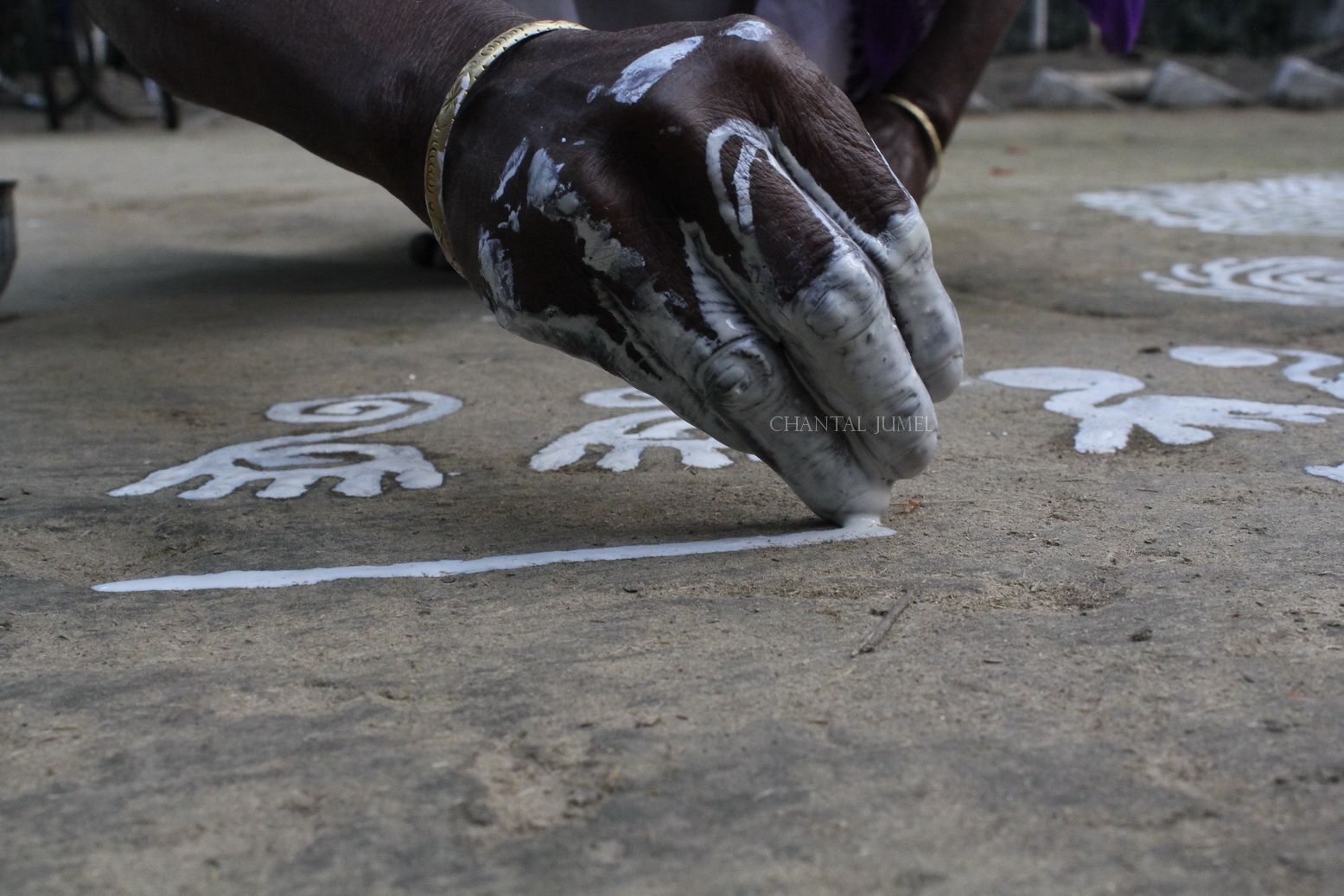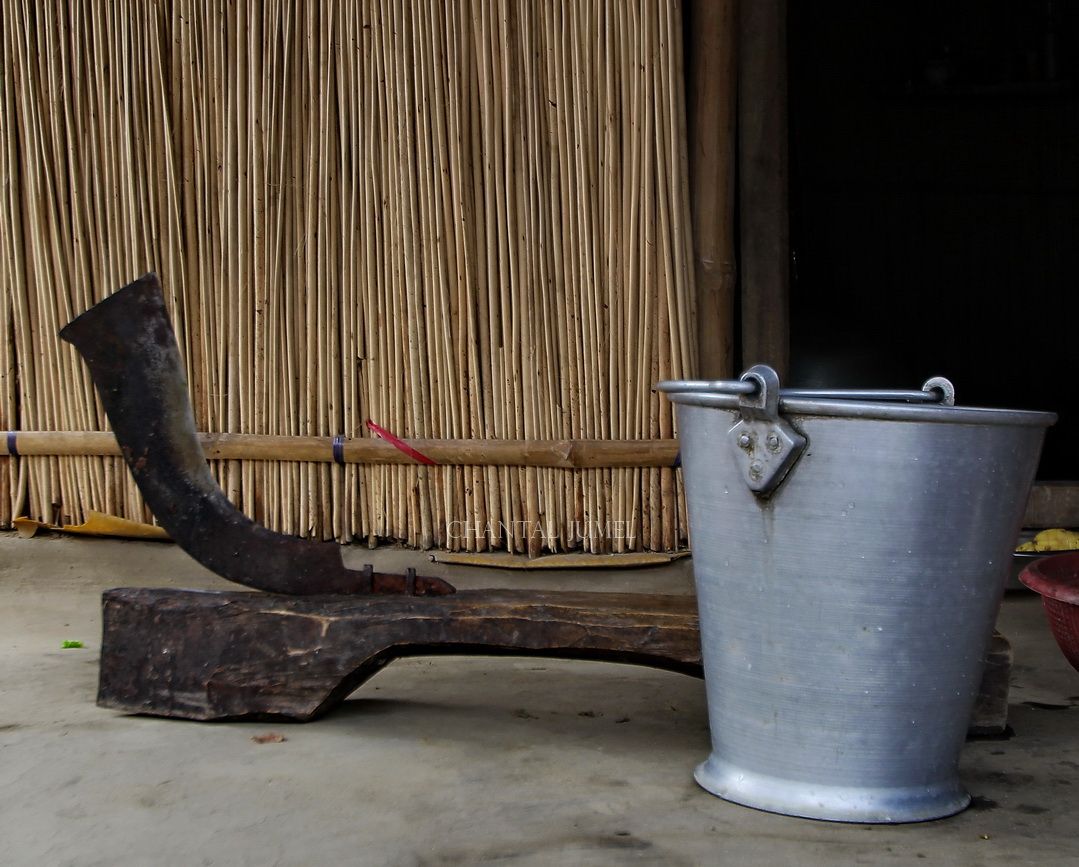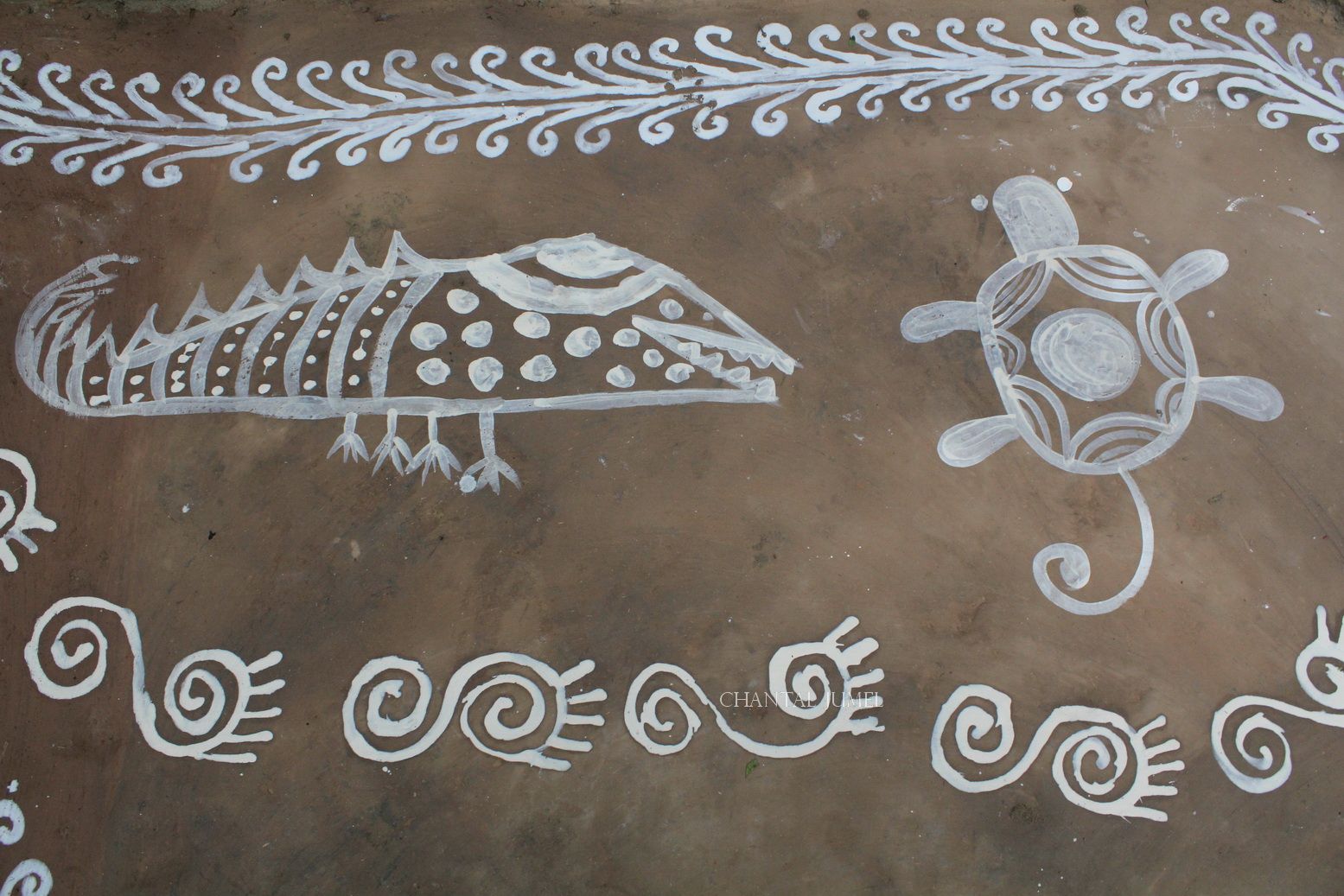Bengal alpona, "At Sumitra’s home"— part 3
In the centre of the courtyard, wrapped in a white shawl, Sumitra paints with a confident hand on the beaten earth. She guides the milky substance between her fingers and invokes the presence of Goddess Lakshmi by repeating her footprints like an incantation.

It is January 14 and rural Bengal is celebrating the abundance of crops and Goddess Lakshmi. We finally arrive in the artist’s village, and it is Rabi himself who welcomes our little group. We exchange greetings, a few words in English to welcome me and he takes us to his grandmother's house.

The main path is studded with footprints painted white to show Goddess Lakshmi the way to the house and bless those who live there.

In the centre of the courtyard, wrapped in a white shawl, Sumitra paints with a confident hand on the beaten earth. She guides the milky substance between her fingers and invokes the presence of Goddess Lakshmi by repeating her footprints like an incantation.



Rice is the essential ingredient for drawing alpona. The sun-dried grains of rice are soaked for hours and then grinded smoothly until a liquid of milky consistency is obtained.


That morning, the countryside awakes to another dimension and under her diligent fingers, the silky white outlines one by one the contours of everyday objects, or those we dream of obtaining. It is an austere white, close in some way to the mystical white that prefigures the transmutation of the profane into the sacred, as in many initiation rites. Rabi, like a chitrakar (West Bengal painters who narrate and sing mythological stories painted on paper rolls), comments one by one on the objects that are placed around a large circular alpona. There is a bucket, a pot, ladles, a basket, and various tools needed for field work such as a hoe, a wooden rake, sickles, and a ladder.


Other items include a basket for separating straw, husk and dust from the good grain, a rice huller called a dheki, and a bonti or cutter, whose curved blade rises from a wooden base and is used for slicing fish and vegetables. Finally, a pair of earrings and bracelets as offerings to the goddess complete the circle.




On the periphery, two cats with happy whiskers seem to be coveting a pair of fish attached to a string, unless it is the heron nearby that is dreaming of catching them.

In another corner of the courtyard, images of a crocodile (kumir) and a turtle (kachin) catch my eye. They are the vehicles of two River Goddesses, Ganga and Yamuna. Ganga is riding a crocodile, while Yamuna stands on a turtle.

A garland representing an ear of rice bending under the weight of its grains encircles the entire courtyard and adjacent paths. Meanwhile, imaginary flowers have created an earthly paradise: a lotus flower drawn with alternating straight and wavy lines, flowers with swirling centres, and others resembling stars.


Previous articles:
Alpona: Images and Symbols of Bengali Women
Bengal alpona, "The River by Jean Renoir"— part 1
